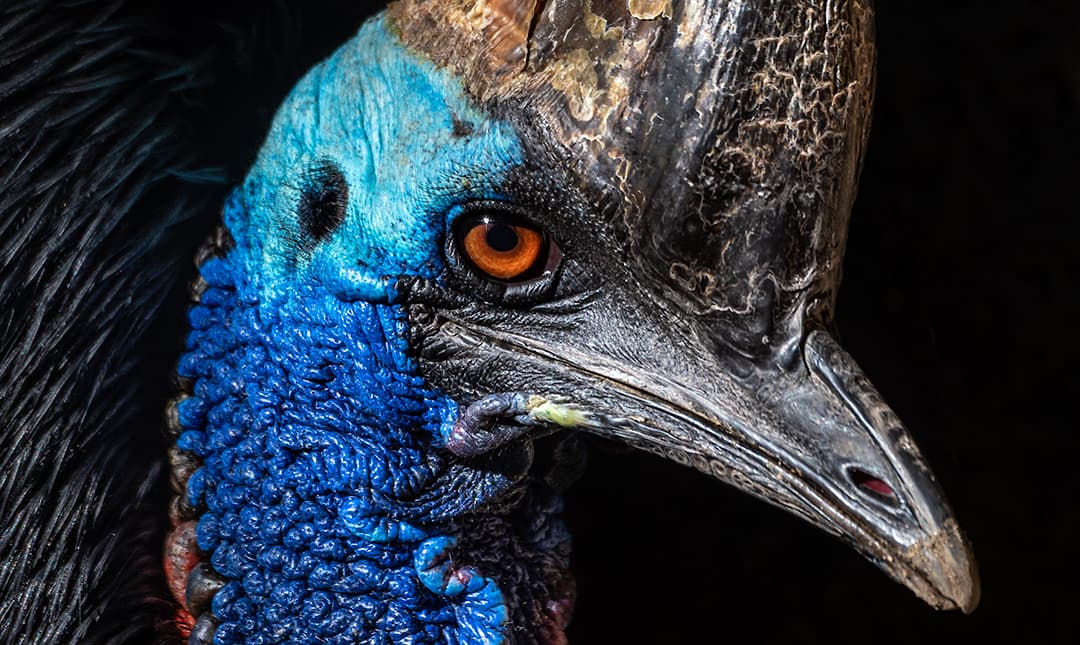About
Cassowaries, like ostriches, are members of a group of flightless birds called ratites and have a reputation for being bad tempered. Although they have descended from flighted ancestors, all that remains of this legacy are rudimentary wings that consist of a few antennae-like quills. Both sexes have a helmet-like structure on their heads called a casque. The casques protect their heads as they run through dense underbrush and it may also pick up low-frequency sounds called booms that these bird produce. Cassowaries can run up to 30 mph and have three clawed toes on each foot. The inner toe has a sharp, four-inch, dagger-like claw. In combat mode, they can leap as high as five feet to attack an opponent feet first, slashing with their powerful claws.
In the wild, after laying her eggs, the female leaves them. She will often take another mate and lay a second clutch. Males are left alone to incubate the eggs and raise the chicks. Fathers remain with the chicks for about nine months, teaching them to find food and protecting them from predators. It takes approximately three years for cassowaries reach their full adult size and plumage.


Habitat
Rainforests of Papua, New Guinea, and northern Australia
Diet
Mainly fruits and berries.
Physical Characteristics
Height up to five feet. Weight 120 to 160 pounds. Females are larger than males.
LOCATION WITHIN THE ZOO
You’ll find this bird in the Australia section. See Zoo Map.


